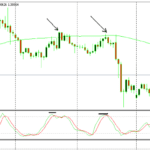Understanding Technical Analysis: Candlestick Patterns Explained
Technical analysis is an essential tool for traders and investors looking to make informed decisions in the stock, forex, and cryptocurrency markets. One of the most popular and effective methods of technical analysis involves understanding candlestick patterns. Candlestick charts provide valuable insights into market sentiment, potential price reversals, and continuation patterns. In this blog post, we’ll break down the fundamentals of candlestick patterns and how you can use them to improve your trading strategy.
What Are Candlestick Charts?
Candlestick charts originated in Japan in the 18th century and have since become a staple in modern technical analysis. Each candlestick represents a specific time period (e.g., one minute, one hour, one day) and provides four key pieces of information:
- Open price: The price at which an asset started trading during the period.
- Close price: The price at which an asset finished trading during the period.
- High price: The highest price reached during the period.
- Low price: The lowest price reached during the period.
A candlestick consists of a body and wicks (or shadows). The body represents the difference between the open and close prices, while the wicks show the high and low prices. If the close price is higher than the open, the candlestick is usually green or white, indicating a bullish movement. If the close price is lower than the open, it is typically red or black, signaling a bearish movement.
Common Candlestick Patterns and Technical Analysis
Candlestick patterns are classified into two main categories: reversal patterns and continuation patterns. Understanding these patterns can help traders anticipate potential price movements.
1. Bullish Reversal Patterns
These patterns indicate a potential shift from a downtrend to an uptrend.
- Hammer: A small body with a long lower wick, signaling that buyers are regaining control after a downtrend.
- Bullish Engulfing: A larger green candle completely engulfs the previous red candle, suggesting strong buying pressure.
- Morning Star: A three-candle pattern where a small-bodied candle appears between a large red candle and a large green candle, indicating a potential reversal.
2. Bearish Reversal Patterns
These patterns suggest a possible transition from an uptrend to a downtrend.
- Shooting Star: A small body with a long upper wick, showing that buyers tried to push prices higher but failed.
- Bearish Engulfing: A larger red candle completely engulfs the previous green candle, signaling strong selling pressure.
- Evening Star: A three-candle pattern similar to the Morning Star but in reverse, indicating a potential downtrend.
3. Continuation Patterns
These patterns suggest that the current trend will continue.
- Doji: A candle with almost equal open and close prices, signifying market indecision. If it appears in an ongoing trend, it may indicate a continuation rather than a reversal.
- Three White Soldiers: Three consecutive green candles with higher highs, confirming a strong uptrend.
- Three Black Crows: Three consecutive red candles with lower lows, confirming a strong downtrend.
How to Use Candlestick Patterns in Trading
While candlestick patterns provide valuable insights, they should not be used in isolation. Here are some key considerations for effective trading:
- Combine with Other Indicators: Use candlestick patterns alongside moving averages, RSI, MACD, and other technical indicators for confirmation.
- Analyze Volume: Higher trading volume increases the reliability of a pattern.
- Consider Market Context: Look at the broader trend and key support/resistance levels before making a decision.
- Practice with Demo Trading: Before applying candlestick patterns in real trading, practice with a demo account to refine your strategy.
Final Thoughts
Candlestick patterns are a powerful tool in technical analysis that can help traders predict price movements and make informed trading decisions. By understanding the various bullish, bearish, and continuation patterns, you can improve your ability to read the market and enhance your trading strategy. However, always remember to use these patterns in conjunction with other technical analysis tools and risk management practices to maximize your success.




